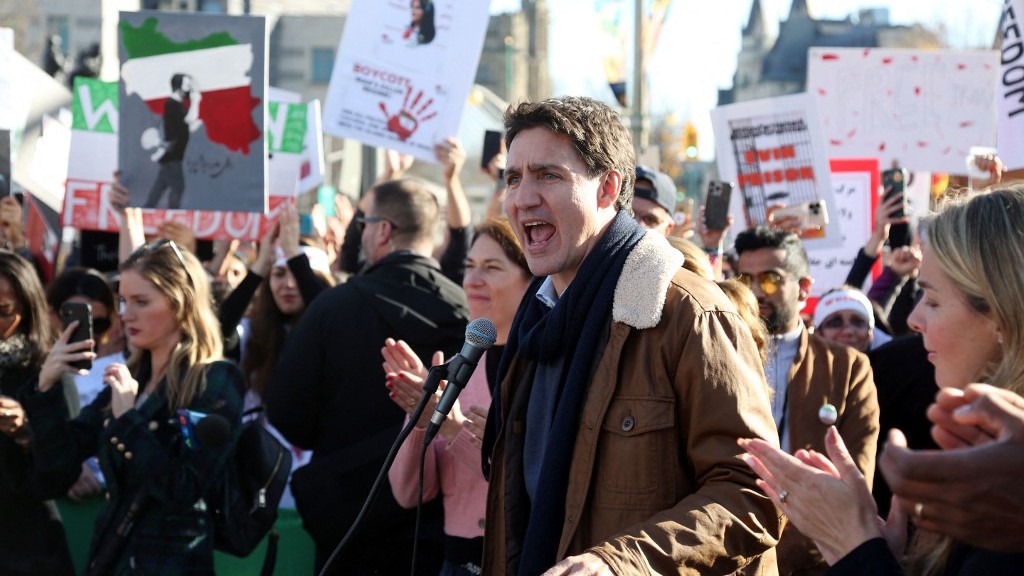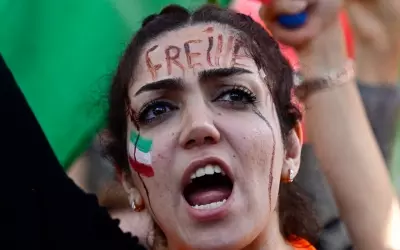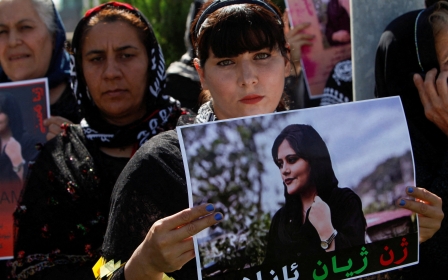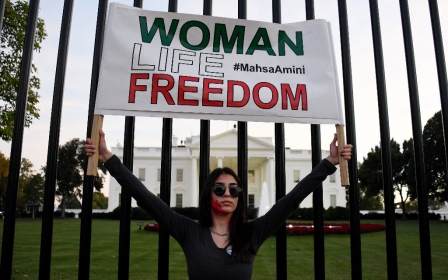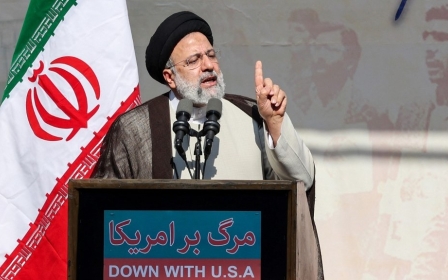Iran protests: What is the endgame?
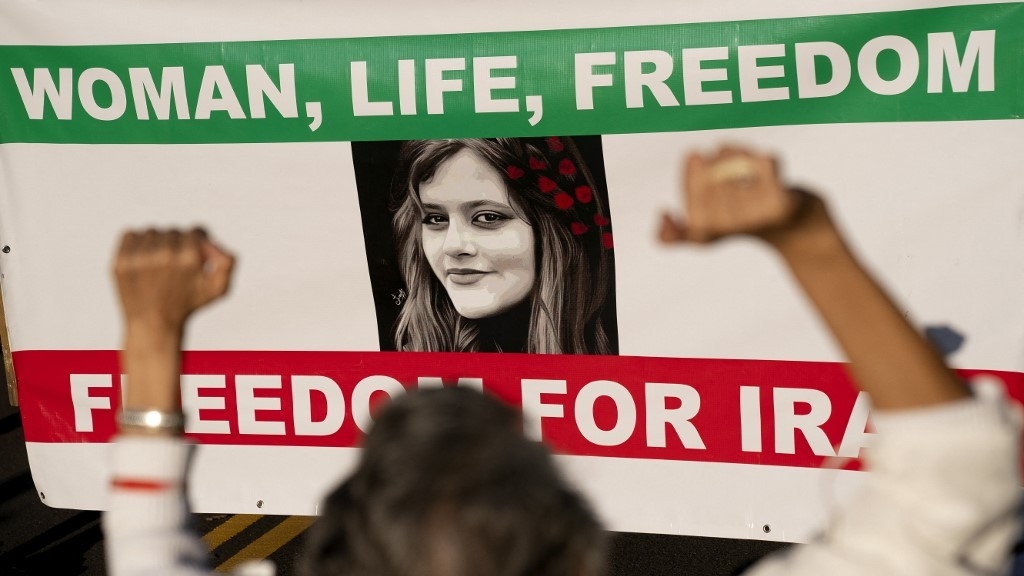
Since the reform movement emerged in Iran in 1997, a large faction of society has supported its advocacy of reforms from within the establishment, through the ballot box.
But in 2020, during moderate President Hassan Rouhani’s second term, parliamentary elections signalled the end of an era. The Guardian Council, which vets candidates, opted to disqualify hundreds of people from running, mostly targeting reformists and moderates.
Then came the 2021 presidential election. Any candidate who could threaten the election of Ebrahim Raisi, including longtime parliamentary speaker Ali Larijani, was disqualified. For the first time since Ayatollah Ali Khamenei became supreme leader in 1989, all three branches of power fell under the control of the conservatives.
The current struggle is partly the continuation of a century-old battle between modernists and traditionalists in Iranian society
There were signs that unrest was brewing in the country. Although Khamenei has asserted that voting is a “religious duty”, and the leader of the reform movement former President Mohammad Khatami also urged people to vote, the turnout last year was the lowest in the Islamic Republic’s history, at less than 50 percent nationwide. People turned their backs on the ballot box, indicating that their faith in and hopes for peaceful reform had vanished.
Under the Raisi administration, the notorious morality police have become violent in enforcing the national dress code on women who did not properly wear the hijab. In Tehran in September, they arrested Mahsa Amini, who collapsed at a detention centre and died three days later. Police denied reports that officers had beaten her with a baton and banged her head against their vehicle.
Amini’s death coincided with one of the worst economic crises since the inception of the Islamic Republic. Rampant inflation, high unemployment, widespread corruption, a lack of social and political liberties, and this discrimination against women created simmering discontent in the country. The Covid-19 pandemic, along with Khamenei’s insistence on keeping the nuclear programme, which resulted in the imposition of scores of international and American sanctions, thus ruining the livelihood of millions of Iranians, exacerbated the situation. Considering his fatwa that nukes are forbidden under Islam (haram), he hasn’t offered any convincing justification for the existence of the programme.
Rallying cry
Against this backdrop, the country needed only a trigger to explode. After Amini’s tragic death, the biggest protests in years rocked Iran - but the uprising has been different from all others in the last four decades.
For the first time, women took centre stage, as “woman, life, freedom” became the rallying cry for protesters.
The protests have been the longest by far in the past four decades. However, if neither the ruling elite nor the protesters step back, the country could be headed towards a protracted conflict. Khamenei has rarely been attacked so directly at this level, with protesters hurling intense profanities against him, aiming to desacralise his religious and legal position.
The far-reaching involvement of universities and schools, especially girls’ schools, has been unprecedented since the 1999 uprising. This time social media has played a key role, intensively documenting the crackdown by Iranian authorities and motivating the younger generation to continue the protests.
Celebrities, inside and outside of Iran, were startlingly public in their support for the anti-government protests. Several female celebrities, as a symbol of feminist solidarity, raised their voices across the world.
Iranians in Europe, Canada, the United States, and Australia organised unprecedented mass rallies showing unity with the protesters inside Iran. But will these protests change the behaviour of the ruling elite, or even change the regime itself? What will it take for this unprecedented, weeks-long uprising to succeed?
The central slogan of “woman, life, freedom” is progressive and supported by millions of Iranian women. That said, it is not enough to attract the large faction of society struggling to put food on the table. While according to the ministry of labor 30 million Iranians live in “absolute poverty”, a report by the semiofficial Iranian Labour News Agency (ILNA) maintains that seven out of ten (59 million) of the Iranian population live under poverty line.
'Domino theory'
At the same time, the protest movement is leaderless. This makes it impervious to easy destruction. Some of the Arab Spring uprisings that toppled dictators were a clear model for the leaderless movement, but early hopes that the revolutions would end corruption and usher in a new era of economic equity quickly collapsed as power vacuums emerged. Even Tunisia, the birthplace of the Arab Spring, is now an autocracy.
Meanwhile, Iran’s regime is a totalitarian “system”, as opposed to one-man rule, although Khamenei sits at the centre of the system. Overthrowing a system that has the support of a faction of society is not as easy as bringing down Zine El Abidine Ben Ali or Hosni Mubarak, the former Tunisian and Egyptian leaders who had ruled for decades, in a matter of days. The reality is that the current struggle is partly the continuation of a century-old battle within Iran’s fragmented society between the conservative camp – the main element of the ruling elite of the Islamic Republic - and the modernists (liberal Muslims and secularists).
One might argue that a leader inside Iran could be neutralised by the regime, as occurred during the 2009 uprisings by putting Mir Hossein Mousavi under house arrest. A realistic solution could be popular leadership outside the country. Ayatollah Ruhollah Khomeini, who led Iran’s 1979 revolution, used to live outside Iran. At present, a popular opposition leader supported by people from all walks of life does not exist, either inside or outside the country.
So far, the ruling elite has firmly stuck to the “domino theory”, arguing that if the regime takes a step back, protesters will become more aggressive and demand more until the regime collapses. Still, some conservative figures within the system have attempted to convince the centres of power that revising some laws “will not lead to a domino-like fall of the system”.
Overall, to succeed, any movement in Iran needs a popular leader to mobilise, unify, give direction, and ultimately fill the power vacuum if the regime collapses. The leader should bring the demands of the needy to centre stage, giving voice to the millions of people struggling to keep their heads above water. This doesn’t mean abandoning the vital slogan of “woman, life, freedom”, which aims to bring hideous discrimination against women to an end.
The views expressed in this article belong to the author and do not necessarily reflect the editorial policy of Middle East Eye.
Middle East Eye propose une couverture et une analyse indépendantes et incomparables du Moyen-Orient, de l’Afrique du Nord et d’autres régions du monde. Pour en savoir plus sur la reprise de ce contenu et les frais qui s’appliquent, veuillez remplir ce formulaire [en anglais]. Pour en savoir plus sur MEE, cliquez ici [en anglais].



